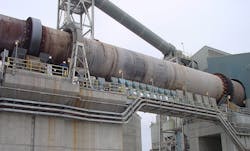Global Cement, Concrete industry aims first Net-Zero acceleration efforts in Egypt, India, Thailand, Colombia
The cement and concrete industry accounts for close to 7 percent of worldwide greenhouse emissions—but it is hardening its resolve to change that to net zero.
The Global Cement and Concrete Association is starting its Net Zero Accelerators initiative with efforts in Egypt, Thailand, Colombia and India. Those nations together represent about 10 percent of overall cement and concrete production, according to the group.
The Accelerator program will identify barriers to decarbonization within the industry in target countries. Better government programs, recycling, waste-to-energy and other circular economic moves as part of the options, the association said. Carbon capture and storage also are on the table for consideration.
“Concrete will continue to be the world’s most used building material for decades to come, meaning global cooperation between governments and industry is crucial to ensuring net zero targets are met,” Thomas Guillot, chief executive for the Global Cement and Concrete Association, said. “Our Net Zero Accelerators will offer collaboration and support to a number of target countries to help them decarbonize and align with the global roadmap.”
Concrete is a key component in development efforts, particularly in nations striving to upgrade infrastructure.
The GCCA last year vowed to aim for Net Zero carbon status by 2050. The near-term goal is a 25 percent reduction in carbon emissions by 2030.
Cement is only a part of the much larger concrete process, which is the most used building material in the world. Overall, some four billion metric tons of cement is produced every year, and together the sector generates $440 billion in revenue annually, according to reports.
Some options noted to achieve greater decarbonization include more efficiency in kilns, chemistries and materials production.
-- -- --
(Rod Walton, senior editor for EnergyTech, is a 14-year veteran of covering the energy industry both as a newspaper and trade journalist. He can be reached at [email protected]).
About the Author
Rod Walton, EnergyTech Managing Editor
Managing Editor
For EnergyTech editorial inquiries, please contact Managing Editor Rod Walton at [email protected].
Rod Walton has spent 17 years covering the energy industry as a newspaper and trade journalist. He formerly was energy writer and business editor at the Tulsa World. Later, he spent six years covering the electricity power sector for Pennwell and Clarion Events. He joined Endeavor and EnergyTech in November 2021.
Walton earned his Bachelors degree in journalism from the University of Oklahoma. His career stops include the Moore American, Bartlesville Examiner-Enterprise, Wagoner Tribune and Tulsa World.
EnergyTech is focused on the mission critical and large-scale energy users and their sustainability and resiliency goals. These include the commercial and industrial sectors, as well as the military, universities, data centers and microgrids. The C&I sectors together account for close to 30 percent of greenhouse gas emissions in the U.S.
He was named Managing Editor for Microgrid Knowledge and EnergyTech starting July 1, 2023
Many large-scale energy users such as Fortune 500 companies, and mission-critical users such as military bases, universities, healthcare facilities, public safety and data centers, shifting their energy priorities to reach net-zero carbon goals within the coming decades. These include plans for renewable energy power purchase agreements, but also on-site resiliency projects such as microgrids, combined heat and power, rooftop solar, energy storage, digitalization and building efficiency upgrades.

